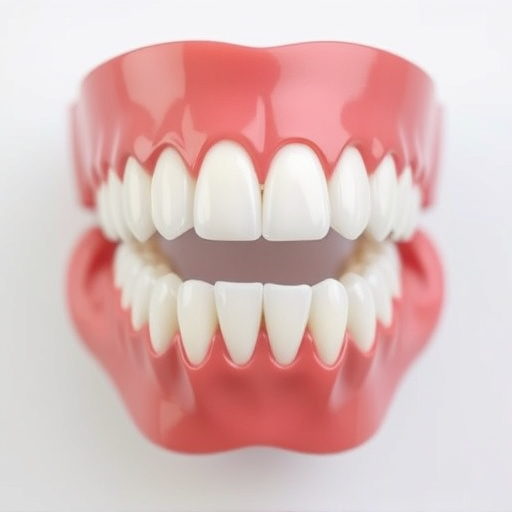Tooth sensitivity treatment addresses sharp pain from hot/cold or sweet substances caused by enamel erosion, gingival recession, and dental wear. Restorative dentistry offers solutions like sealants, coatings, clear aligners, and routine exams. Sealants protect chewing surfaces, while coatings target specific sensitive areas. Regular applications manage ongoing sensitivity, with sealants suitable for children's emerging teeth. Preventive dentistry through routine exams aims to maintain optimal oral health before issues worsen.
Tooth sensitivity can be a painful issue, but there are effective treatments available. One of the options involves using sealants or coatings, which act as protective barriers on your teeth. This article delves into the world of tooth sensitivity treatment, exploring the causes behind the discomfort and how these innovative solutions work. We’ll guide you through choosing the right treatment, comparing sealants and coatings to help you decide which option best suits your needs for lasting relief from sensitive teeth.
- Understanding Tooth Sensitivity and Its Causes
- Sealants and Coatings: How They Work in Treating Sensitivity
- Choosing the Right Treatment: Sealant vs Coating for Your Teeth
Understanding Tooth Sensitivity and Its Causes

Tooth sensitivity is a common dental concern that can significantly impact an individual’s quality of life. It refers to a sharp, short pain triggered by certain stimuli like hot or cold foods and beverages, sweet substances, or even cold air. This discomfort arises from the exposure of the tooth’s inner layers, particularly the dentin, which contains tiny tubules connecting to the tooth’s nerves.
Several factors contribute to tooth sensitivity, including enamel erosion caused by acidic foods and drinks, gingival recession revealing the root surface, and dental wear from grinding or clenching habits. In some cases, sensitive teeth may also be linked to underlying conditions like gum disease or tooth decay. Restorative dentistry offers various solutions for managing and treating tooth sensitivity, with sealants and coatings being effective methods. Clear aligners and routine oral exams can also play a crucial role in maintaining oral health and addressing the causes of sensitivity.
Sealants and Coatings: How They Work in Treating Sensitivity

Tooth sensitivity treatment can be effectively addressed through the application of sealants and coatings. These dental materials act as protective barriers, sealing the dentin—the layer beneath the tooth enamel that contains nerve endings—from irritants like hot or cold foods, sugars, and acidic substances. By blocking these triggers, sealants and coatings help to reduce discomfort associated with sensitive teeth.
In family dentistry, these treatments are often part of a comprehensive preventive dentistry approach. Regular routine oral exams can help identify early signs of tooth sensitivity, allowing dentists to recommend appropriate interventions such as applying sealants or coatings. Preventive dentistry focuses on maintaining optimal oral health through regular care and education, ensuring that issues like tooth sensitivity are addressed before they become more severe, thus promoting overall well-being.
Choosing the Right Treatment: Sealant vs Coating for Your Teeth

When considering tooth sensitivity treatment, deciding between sealants and coatings is an important step. Both options serve as protective barriers for your teeth, but they work in slightly different ways. Sealants are typically applied to the chewing surfaces of back teeth, creating a smooth, hard layer that prevents food particles from settling and reducing the exposure of sensitive dentin. Coatings, on the other hand, often target specific areas of sensitivity and can be made from materials like fluorides or porcelain.
Choosing between them depends on the severity of your sensitivity and the areas affected. Dental bonding might be recommended for small gaps or exposed areas, while dental crowns offer a more comprehensive solution for significant wear or damage. Preventive dentistry also plays a role; regular applications of coatings can be part of an ongoing strategy to manage tooth sensitivity, whereas sealants are often used as a preventive measure during childhood to protect emerging teeth.
Tooth sensitivity treatment options like sealants and coatings offer effective solutions to alleviate discomfort. By understanding their mechanisms and choosing the right approach, individuals can find relief from sensitive teeth. Whether it’s applying a protective sealant or using specific coatings, these methods effectively plug dentin tubules, preventing stimuli from reaching the nerve. When considering tooth sensitivity treatment, consulting a dental professional is key to determining the best option for your needs.














